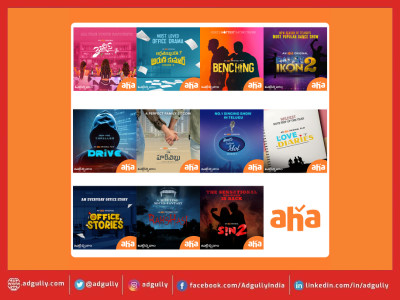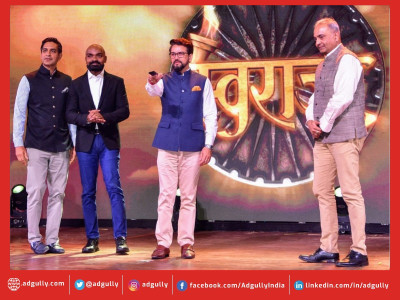The growing march of regional OTT and why it is so important for the industry
India’s Over the Top (OTT) Entertainment industry is burgeoning into a multi-billion-dollar industry, cannibalising into the established bastion of traditional television, radio and cinema auditorium forms of media and entertainment. The size of the OTT market in FY20 stood in the range of $1.7 billion (both Video and Audio). Home-grown Independent Transaction Advisory firm RBSA Advisors believes that this industry has the potential to grow to be $15 billion industry over the next 9-10 years. According to an MPA report, India will have 1 billion video screens by 2024, with 85% broadband ready.
Along with the growth of mainline OTT players like Netflix, Amazon Prime Video, Disney+ Hotstar, SonyLIV, ZEE5 and Voot, among others, the next wave of growth in the OTT landscape will come from the Tier 2, 3, 4 cities and the regional markets.
Coming Soon: SCREENXX 2021 – The biggest gathering of the OTT & Entertainment industry
Today, the viewers are discerning and open to experimentation, they are willing to venture out of the comfort of familiarity and go in search of good stories, with compelling, nuanced narratives. There has been a paradigm shift in the brand customer relation, it now extends beyond languages and borders. Regional content in Tamil, Telugu, Marathi, Bengali languages, among others, have seen growing number of subscribers, especially during the pandemic times.
According to the FICCI-EY report on the M&E industry, the share of regional language consumption on OTT platforms will cross 50% by 2025 from the 30% share it held in 2019, easing past Hindi at 45%. Consumption of regional content has accelerated in the past year, with the overall OTT industry witnessing high growth. Regional OTT already holds nearly 40-45% share of the overall OTT pie in terms of consumption, as per industry analysts. This is primarily due to the original content offerings, which the mainstream OTT platforms are unable to provide.
"At aha, genres such romance and comedy genres are doing very well in addition to crime."
Commenting on the changes in the regional OTT viewership over the years, Ajit Thakur, CEO, aha, said, “Regional content viewership is going through a big change, especially in Telugu, but the interesting thing is that what we have seen in regional content, specially at aha, the dominance of crime genre has been displaced and now viewers are watching different genres. At aha, genres such romance and comedy genres are doing very well in addition to crime. Another trend that is common to regional as much as all other languages across the country is the growth of biographies.”
Over the last few years, Indian language content has seen some great stories traveling both within and outside India. Historically, local content would get a limited release outside their home markets, but that has changed with the increased adoption of streaming services. Improving access to high-speed, affordable Internet, higher disposable incomes, seamless, friction free viewing experience aided by advancements in tech, enhanced localisation with subs and dubs, and personalised marketing and discovery opening the door for viewership to new audiences are all factors contributing to the widening of the viewing choices whilst encouraging all segments of the population to explore and experiment with their entertainment.
"One of the key reasons for the phenomenal success of these films on Amazon Prime Video has been our strong partnerships with production houses across the country, who have reposed faith in us and worked alongside us to serve the very best of entertainment to our consumers.”
Speaking about the increase in demand for regional content in India, an Amazon Prime Spokesperson elaborated, “Our local language movies broke viewership records. In India, the viewership of our local language (Tamil, Telugu, Malayalam, Kannada) content registered 50% of the audiences outside the home state. Globally, these movies are being watched in around 170 countries and international viewers already account for between 15% and 20% of the total audiences of these regional language films. One of the key reasons for the phenomenal success of these films on Amazon Prime Video has been our strong partnerships with production houses across the country, who have reposed faith in us and worked alongside us to serve the very best of entertainment to our consumers.”
While the mainstream platforms already have content in regional languages, certain viewers might feel that major OTT platforms do not completely cater to the needs of those who are looking to consume regional content as they have only limited titles. Hence, as the consumption of regional content has increased over the years, it has also led to an increase in the regional platforms.
"Platforms like Planet Marathi, which received the first mover’s advantage, will do much better than the ones which will launch in the days to come."
Highlighting how there is a need for an exclusive app for regional languages, Akshay Bardapurkar, Founder, Planet Marathi, said, “Regional content on mainstream cannot take over a regional OTT platform, simply because it is not an exclusive regional app. In the coming years we will see only exclusive content of those regions who will do well and we will see a rush of other OTTs going regional. That’s because people connect with their language more than the international languages and if the content is made with great quality, mainstream Hindi and English will suffer. I feel that platforms like Planet Marathi, which received the first mover’s advantage, will do much better than the ones which will launch in the days to come. We would have superseded many others simply because we would be able to understand the taste of Marathi audiences at large and that’s why we say if the OTTs have to survive, the only way that can happen is when you have a major chunk of the vernacular medium in it and that’s why Regional is the only way forward.”
(Edited and additional inputs by Shanta Saikia.)
















Share
Facebook
YouTube
Tweet
Twitter
LinkedIn